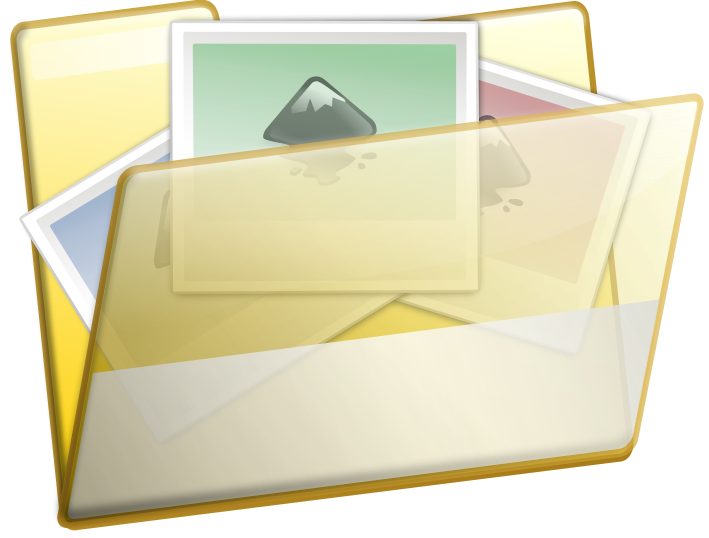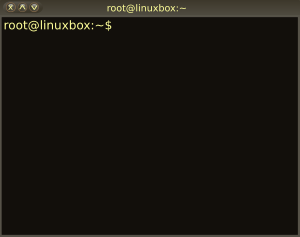| Previous
Page |
PCLinuxOS
Magazine |
PCLinuxOS |
Article List |
Disclaimer |
Next Page |
Bored? Twenty Ideas To Help |
|
by Paul Arnote (parnote) Let's face it. PCLinuxOS is stable. It just plain, flat out works. Thanks to the diligence and dedication of the developers, things ... like updates and new software installations ... just go too easy. For users accustomed to always having to tweak and fix their computers, the fact that everything works can leave them feeling rather bored. If you find yourself in this predicament, here are some ideas you might want to try in order to break the boredom cycle. Plus, the beginning of the New Year is an excellent time to perform many of these tasks.  1. Organize your wallpaper files If you're like me, you probably have a literal ton of wallpaper files. Whenever I see an image I like, I download it to my computer and store them in my ~/Wallpaper directory. But after a while, all of your space images are mixed in with your still life images, which are also mixed in with all of your landscape and abstract photos. After a while, things can become a real mess ... and a favorite wallpaper file can become rather difficult to find. Top that off with the fact that I have set up my NatGeo and Bing scripts to automatically download images every day, via a cron job. Yes, I have amassed quite a collection of wallpaper files. Make folders within your ~/Wallpaper directory, each with the name of the category of the images within it. For example, here is a partial list of directory names within my ~/Wallpaper directory: Abstract, Animals, Flowers, Holidays, Landscapes, Linux, Misc, Nature, PCLinuxOS, Personal, SciFi, Space, Weather. Because of running the NatGeo and Bing scripts (as I mentioned above), I also have Bing and NatGeo directories. The more specific you make them, the more order you can make from the chaos created by just shoving all the files into one catch-all directory.  2. Learn how to package. There are resources in the PCLinuxOS Knowledge Base for learning how to package for PCLinuxOS. Texstar and the rest of the developers would surely appreciate the help. Plus, you'll be giving something back to your favorite Linux distro.  3. Write a magazine article. I will tell you straight up ... we welcome and appreciate article submissions to The PCLinuxOS Magazine. Fire up one of the programs you use a lot, and write up a detailed tutorial on how to use it, or how to accomplish a specific task within that program. I guarantee that there are many users who will benefit from your knowledge and insights.  4. Find and read some new technical blogs. You can't even begin to imagine how many technical blogs there are. Just on the technorati.com website, there are over 47,000 technical blogs listed. With all of those blogs, surely you can find something that piques your interest. Who knows? You may also learn some new things along the way.  5. Catalog your "collections." All of us have collections, of some kind. It could be collections of music, movies, videos, stamps, coins, insects, bird feathers ... or anything else. You could create your "catalog" in a spreadsheet, or you could go one step further and create a database with advanced search capabilities. Either way, it's a task that will help you not only find out what all fills your collection, but also may help reveal items that may be missing from your collection.  6. Learn the Linux command line. There are hundreds, if not thousands, of websites out there just waiting to teach you the Linux command line. Knowledge of the Linux command line, while not essential with today's GUI desktop environments, is helpful. Armed with knowledge of the Linux command line, you can leverage your PCLinuxOS installation in ways you may not even envision. Plus, you may find some easier and faster ways to perform some of the daily tasks you undertake on the computer. One great place to start would be to download The PCLinuxOS Magazine's Command Line Interface Intro Special Edition, filled with all of the excellent articles by PCLinuxOS user Pete Kelly, a.k.a. critter.  7. Learn bash scripting. The obvious choice after learning the Linux command line is to learn how to create bash scripts. Pete introduces bash scripting in his Command Line Interface Intro articles, but there's a lot more to learn. While there are hundreds of resources available to help teach bash scripting, I can highly recommend two (and not to the detriment of any of the others ... these are just the ones that I use). Both are available as PDF downloads. First, there is the Bash Guide For Beginners, by Machtelt Garrels. Second, there is the Advanced Bash Scripting Guide, by Mendel Cooper. Downloading them to your computer makes them an ever-ready reference source. You may initially think that the second one follows the first (and to an extent, that is somewhat true), you will do yourself a huge favor in viewing these two books as companion works. Sometimes, if there's a concept you're not grasping in the beginner's guide, looking at examples in the advanced guide can often help. Another thing that can be a huge help is to view bash script coding examples. One great source is GitHub. Joining (or creating an account) is optional. You can still view code examples, even if you don't join. Let's say you want to take a look at bash scripts that work with MP3 files. Enter MP3 in the search box, and press the Enter key. Along the left side of the screen, you'll see a column that lists the languages of the "programming" languages represented (JAVA, JavaScript, Ruby, Python, Perl, Shell, etc.). Select the "Shell" category, and you will find all of the bash scripts that work with MP3 files. The more you look at bash script examples, the more this stuff starts to make sense. Plus, think of the sense of accomplishment you will have after you create your first bash script. Trust me ... it will fuel your desire to create more.  8. Backup your files. Face it ... many (most) of us are negligent (lazy) about backing up our files. Take the time to backup your files, either to the cloud, or more preferably, to a USB connected external hard drive. I definitely understand the reluctance some users may have against storing items in the "cloud." With the recent revelations of spying on ordinary citizens by the NSA and the British GCHQ (among others, I'm sure), it has made even non-paranoid users think twice about storing their personal files in the cloud. Armed with an external USB hard drive, it's relatively easy to backup your files. There are some choices of programs to use, too. One is LuckyBackup, while another is Grsync. Both are in the PCLinuxOS repository. There are others, but these are the two that immediately come to my mind.  9. Browse YouTube. If you just want to kill some time, while being entertained in the process, browse videos on YouTube. 100 hours of video are uploaded to YouTube every minute of the day. So, the chances that you've seen everything is ... well ... none. Here's a link to the first video uploaded to YouTube. It was uploaded at 8:27 P.M. on Saturday, April 23rd, 2005. The video was shot by Yakov Lapitsky at the San Diego Zoo, and uploaded by YouTube co-founder Jawed Karim. There's even a compilation video of the first 20 videos uploaded to YouTube (there are links to each of the 20 originals in the "sidebar" on the video page). After watching that, I can say that I don't see a lot of difference between then and now. Well ... ok ... maybe the picture quality is a bit better. At any rate, you could spend a LOT of time just browsing videos on YouTube.  10. Re-examine personal finances. It's easy to allow our personal financial situation to rapidly get out of control. Bills sometimes come in faster than the money does to pay them. Couple that with unexpected "emergency" expenditures, and things can go south very fast. One strategy most every financial planner suggests is to write down everything that you spend during the month. That means every candy bar, every soda, every coffee, every latte, every single thing that you buy. Food, utilities, clothing, medical bills, medicines and all the other "essentials" should also be listed. At the end of the month, add them all up. You will be surprised how much money is spent on unimportant, impulse purchases. The goal, upon looking at the totals, is to eliminate as much of the unimportant purchases as you can. Other things that can help include finding a way to consolidate credit card bills, refinancing your home at a lower interest rate, moving money from lower interest savings accounts to higher interest accounts, and signing up for online bill pay.  11. Review your online wish lists. I have a confession. I hate Christmas shopping. The malls, the poor parking, and the crowds are among the irritants that make Christmas shopping unenjoyable. So, for as long as I can remember, my wife and I maintain a wish list on Amazon throughout the year. Then, when October or November rolls around, we share that wish list with one another, and we each do our Christmas shopping for one another entirely online. The benefits are many. First, we are able to purchase things for one another that we know the other one wants. No need to worry that the other one knows what they are getting for gifts. The lists are always way longer than what we can afford, so we pick items from that list. Second, we don't fight crowds, nor the poor parking. We just order and wait for the parcel delivery service to deliver them to our doorstep. Third, there is usually quite a few unpurchased items that remain on the list that we can refer back to those wish lists for birthday gifts, and any other time throughout the year that we want or need to purchase a gift for the other. Fourth, we can share that same wish list with other friends and family members who may be searching for gift ideas for us. After the holidays is an excellent time to update your wish list. What? You don't have one? Then it's also an excellent time to start one. Just don't forget to add things throughout the year as you stumble across items you might like to have. To facilitate adding things to our Amazon Wish List, we both have the Amazon "Add To Wish List" Firefox extension loaded into our Firefox browsers. This simple add-on places a button on Firefox's toolbar that allows us to add anything we stumble across on the internet to our Amazon Wish List, even from non-Amazon sites.  12. Organize your music collection. The great philosopher Plato is quoted as saying, "Music gives a soul to the universe, wings to the mind, flight to the imagination and life to everything." All of us find music enjoyable. Granted, not all of us like the same kind or genre of music. But music tends to permeate many, many aspects of our lives. As such, many of us have collections of our favorite music. Some of it might be on CDs, while other parts of our collection might be MP3 or OGG audio files. To begin, it might be helpful to convert our CD collection to a digital format, to make it easy to listen to either on our computer, or on our portable devices. There are several utilities in the PCLinuxOS repository to rip your audio CDs to digital audio files. They go by such names as abcde, asunder, atunes, goobox, grip, jukes, K3B, kde-services (adds service menus to KDE's Dolphin and Konqueror), rubyripper and soundkonverter. Pick the utility that rips your music to the format you want or need, and one that is easy for you to use. Next, organize your digital files in a method that makes sense to you. Don't worry how others say you should organize them. If your organization method means separating the files by artist, album name, track number, and track title, then that's what you should do. The structure of your organizational delimiters is entirely up to you. Whatever method you use, it's important to be consistent. Otherwise, all of your preparations will be for nothing, and you might end up with a bigger mess than you started with.  13. Change your passwords. We've covered this previously this year in the September 2013 issue of The PCLinuxOS Magazine. Far too often, most of us get lazy with our passwords, and once we have them in place, almost never change them. You should at least change them annually, and preferably more often. If you choose to change them annually, pick a time of year to do it, then use that date to change them every year. Normally, I would say that changing them as the New Year rolls around would work, but if you consume alcohol, I would suggest another time. You wouldn't want your password choices to be made after you've consumed alcohol, or when you have a hangover.  14. Learn a new language. In the U.S., most people speak one language. In other parts of the world, it's not nearly as uncommon to be multilingual. Thanks to the internet, learning a new language is actually pretty doable. Let's say you want to learn to speak Spanish. Google netted 261,000,000 hits when I used "learn spanish online free" as my search criteria. Want to learn to speak French (414,000,000 hits)? How about Portuguese (32,500,00 hits)? German (250,000,000 hits)? Dutch (56,100,000 hits)? Russian (152,000,000 hits)? Just replace the word "spanish" in the search criteria with the language you want to learn.  15. Learn to play an instrument. If you ever wanted to learn to play an instrument (or a new instrument), the internet can also be a great resource for free lessons. Learning to play an instrument (or learning music) has been linked to higher math scores and a keener intellect. First, you will need an instrument, if you don't already have one. Search Ebay, Craigslist and other online classified ads for a working and affordable instrument. You can also check local music stores for affordable used instruments. The latter will help insure that you get an instrument in relatively good shape. There's nothing quite like a malfunctioning instrument to sabotage your attempts to learn to play an instrument. Next, search for free lessons online for your chosen instrument. For example, Google came up with 24,400,000 hits when I used "learn to play guitar online free" as my search criteria. Similarly, you can search for other instruments ... such as saxophone, trumpet, flute, piano, clarinet, etc. ... simply by replacing "guitar" with the instrument you want to learn.  16. Digitize your old photos. Most of us have access to old photos from the pre-digital era, including collections of heirloom photos. Spend some time digitizing those photos with an image scanner. Not only will you be preserving those photos from inevitable deterioration, you can share the digital copies with all members of your family by burning the digital copies to optical medium. When you're done, everyone can have copies of the images to enjoy for years, and even make their own prints. An added benefit is that you can restore images that might have become damaged over the years. Follow the tips in Meemaw's series of graphics editing articles in The PCLinuxOS Magazine to learn the necessary skills to restore damaged images. 17. Organize your emails. Whether you use a standalone email client or stay strictly with webmail, take the time to create filters and folders/labels for your email. Don't stop until you've processed every email in your inbox. In the end, it'll make it easier to find items when they aren't all lumped together in one massive, collect-all inbox.  18. Browse Linux man pages. Spend some time browsing Linux man pages, even for commands you know and use a lot. For example, browse a simple command like "ls" and you may be surprised at the breadth of available options.  19. Get out from behind the keyboard and start an exercise program. Your physical health is just as important as your mental and intellectual health, so get started on an exercise program. You can set the intensity of those workouts to a level that's comfortable. If you can afford it, you can join a gym. Some gyms even provide guidance from a personal trainer for the monthly membership fee. Or, you can buy a bicycle and start bicycling (trust me ... the higher quality bicycles from a reputable bike shop are worth the extra money, especially when compared to "department store" bicycles, from Wal-Mart and other mass retailers). Be sure to check with your personal physician before embarking on any exercise program, especially if you have a history of medical problems.  20. Take a free online college course. Are you ready for this? Google returned 263,000,000 hits when I searched with "free online college courses" as my search criteria. Surprisingly, quite a few of these courses can be taken ... for free ... for college credit. Some of these free courses are available from such prestigious colleges as MIT, Yale, Stanford and Harvard. Knowledge is power, so empower yourself. |

